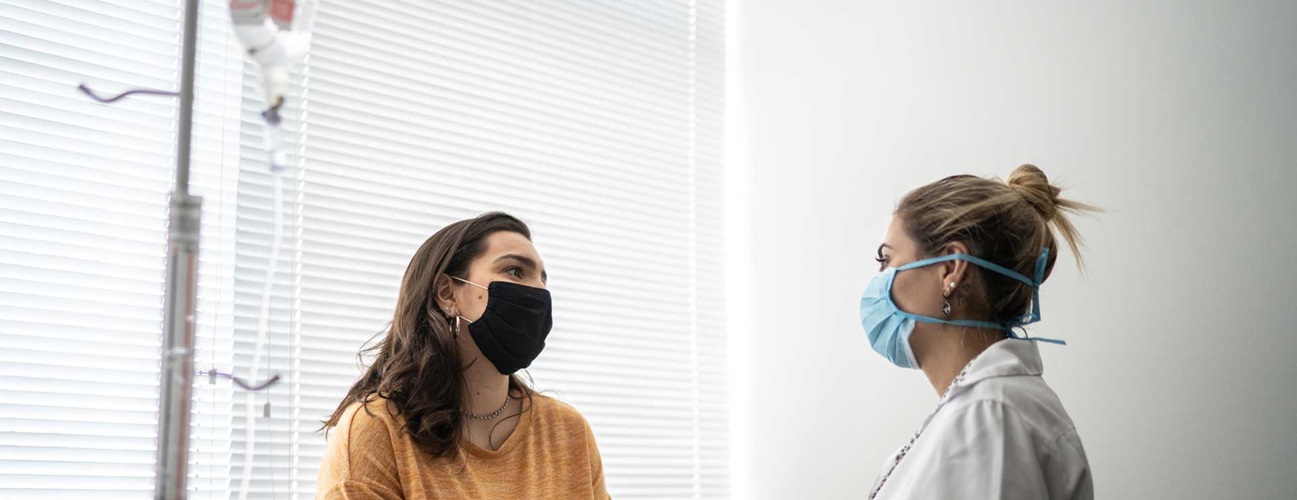Argon Plasma Coagulation for Weight Loss
Argon plasma coagulation (APC) can help restart weight loss for people who regain weight after a gastric bypass.
What You Need to Know
- Argon plasma coagulation uses charged argon gas to thicken or scar tissues.
- It is often used to coagulate blood to help stop bleeding in the gastrointestinal (GI) tract.
- APC can also help people who have regained weight after a gastric bypass surgery by reducing the stretched opening between the stomach and the small intestine.
- The procedure is performed with an endoscope that is inserted through the mouth.
- APC is generally safe and has minimal complications.
What is argon plasma coagulation?
APC is a procedure that uses ionized gas to cause the blood to clot (coagulate) or to form scar tissue in the digestive tract. APC may be used in GI procedures to treat areas of bleeding or to address weight regain after gastric bypass.
Who may need APC to help restart weight loss after gastric bypass?
APC can help with weight loss in people who have had a type of bariatric surgery called a gastric bypass. Gastric bypass reduces the size of the stomach to a small pouch, which empties food into the intestine through an opening called a gastrojejunal anastomosis or gastric outlet.
A person may regain weight after a gastric bypass, which can be disappointing and distressing. There are several causes for weight regain after a gastric bypass, including eating patterns and lifestyle factors.
Another reason is the stretching out (dilation) of the opening between the new stomach pouch and the small intestine. A wider opening means the food may empty faster into the small bowel, leaving the person feeling hungry soon after eating and needing more calories to feel full. A person may also experience:
- stomach cramping
- flushing
- rapid heart rate
- diarrhea after eating sugary foods (this suggests you may have developed dumping syndrome)
If you have these symptoms and you start regaining weight, reducing the opening between the stomach pouch and the small bowel could help. Before recommending argon plasma coagulation, a gastroenterologist needs to examine the gastrojejunal anastomosis with an endoscope to see if it has expanded.
By using an endoscope to perform argon plasma coagulation, a gastroenterologist creates scar tissue that tightens the opening. A smaller opening helps slow stomach pouch emptying so that a person feels fuller longer and can resume weight loss. The procedure may need to be repeated (usually two to three times) to reduce the size of the opening back to its size after surgery.
APC may be recommended as an alternative to transoral outlet reduction, another procedure to shrink the opening.
Preparing for Gastric Bypass Revision with APC
To get ready for argon plasma coagulation, follow the doctor’s instructions for an upper endoscopy.
Preparation may involve temporary changes to eating, drinking and taking medications the night before and the day of the argon plasma coagulation, and for two days after the procedure.
Arrange for a ride home after the procedure is finished, since you will be given sedating medication.
What happens during gastric outlet reduction with argon plasma coagulation?
On the day of the procedure, you lie on a treatment table under appropriate sedation to ensure your comfort, while a gastroenterologist performs the following:
- The doctor guides a lighted tube called an endoscope through the mouth to the area of concern.
- A grounding pad is placed on your thigh. (The pad is removed at the end of the procedure.)
- The doctor inserts the APC catheter through the endoscope and positions it in the desired spot. The doctor controls the flow of argon gas with a foot pedal and applies the treatment in a circular fashion to the edge of the outlet. This results in scarring around the gastric outlet, which tightens it.
- The strength of the electric charge is adjusted so the treatment is appropriate for the thickness of the tissue being treated.
The procedure takes about 15 minutes.
Johns Hopkins Endoscopic Weight Loss Program
The team with the Endoscopic Weight Loss Program offers innovative weight loss procedures that do not require invasive surgery. We take a collaborative approach to obesity management that combines the expertise of many specialists, which helps us offer high-quality care and enable long-term weight loss.
Recovery After Argon Plasma Coagulation
Most people having APC for gastric bypass revision can go home afterward, and most can return to normal activities, such as work or school, the next day. The doctor will likely prescribe a liquid diet for one week to let the gastric outlet recover, followed by a calorie-controlled soft food diet before you return to eating your normal range of foods, but in smaller portions.
Complications and Side Effects of Argon Plasma Coagulation
The procedure is generally safe. Complications are rare, but may include the following:
- Stenosis (over-narrowing) of the gastrojejunal anastomosis can occur in patients who had APC for gastric bypass revision. Stenosis can be treated by using balloon endoscopy to widen a too-tight opening.
- Perforations (tears) in the stomach or intestines are a rare risk associated with endoscopic procedures.
- Bleeding is rare after APC treatment.






